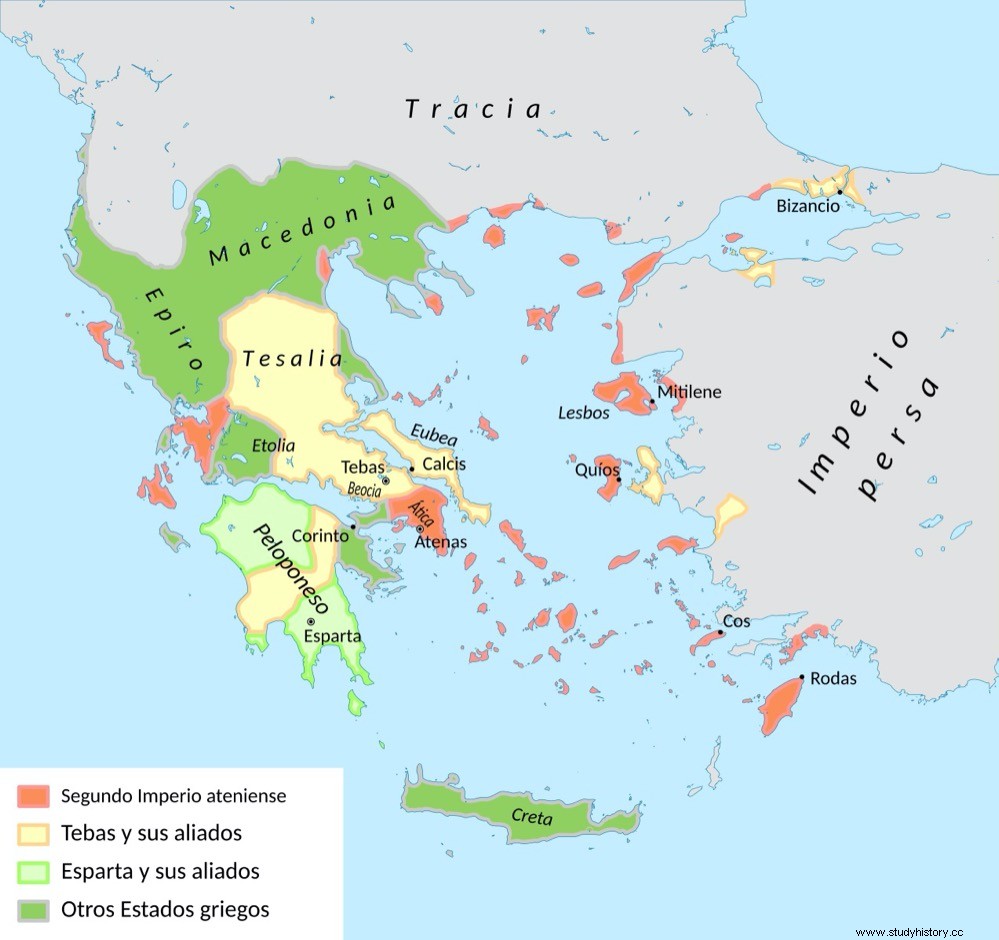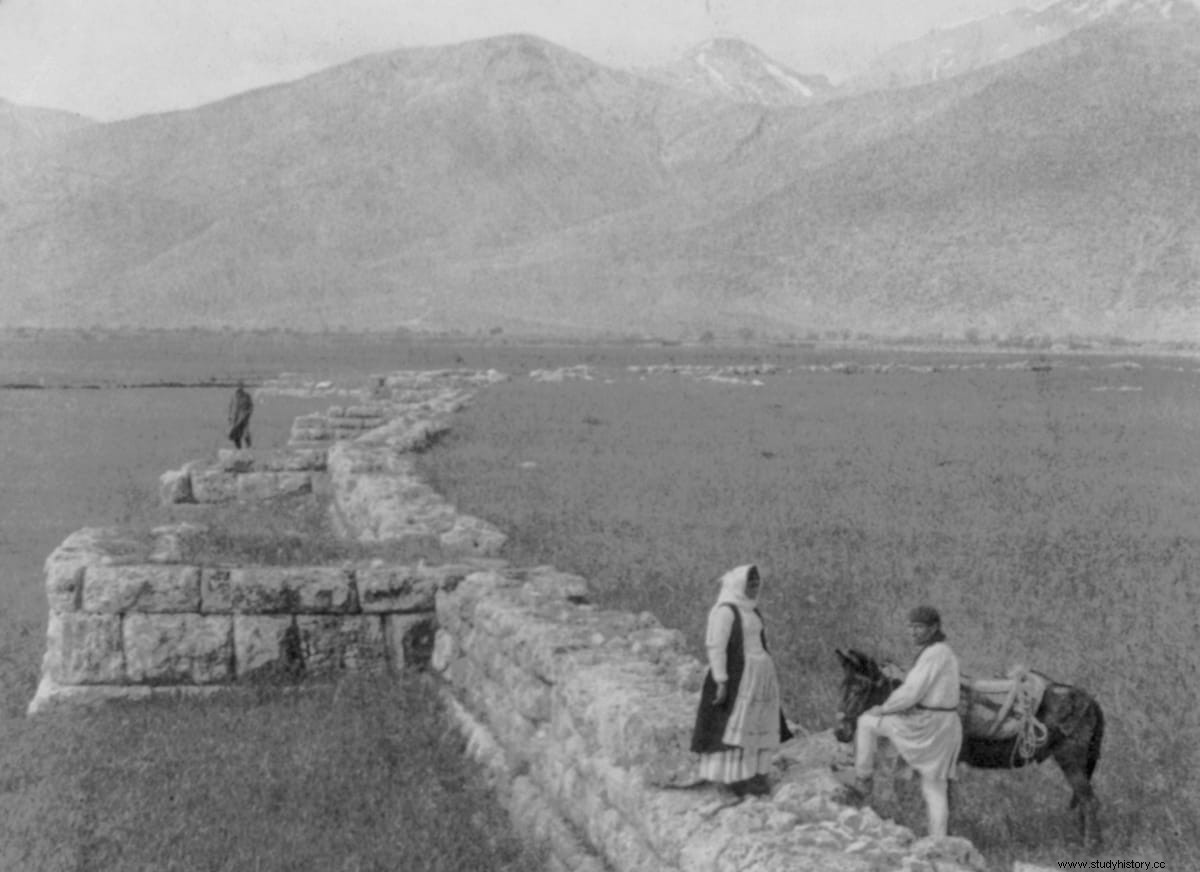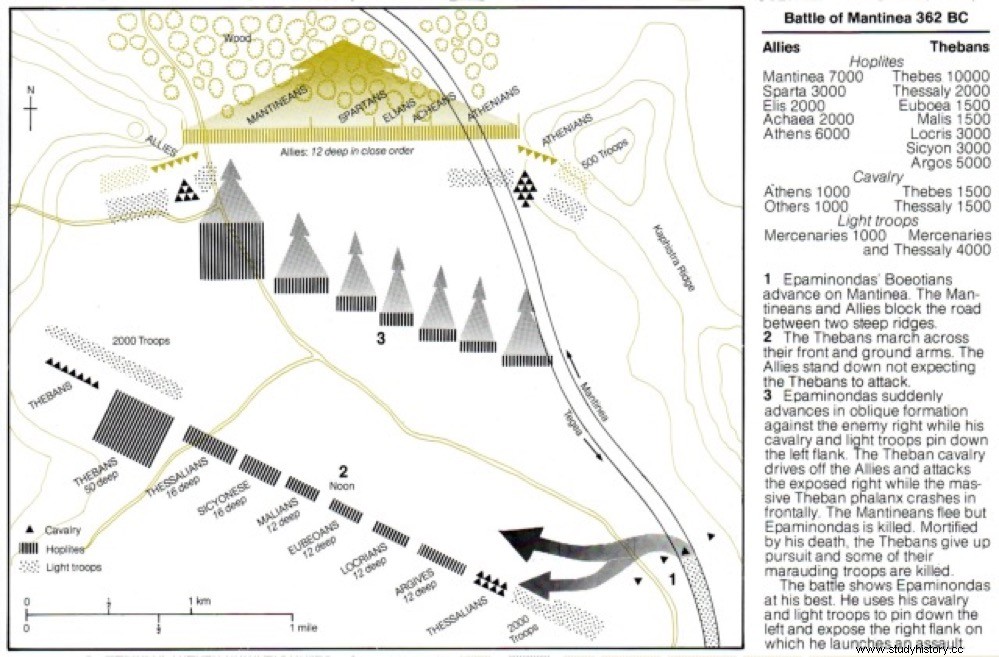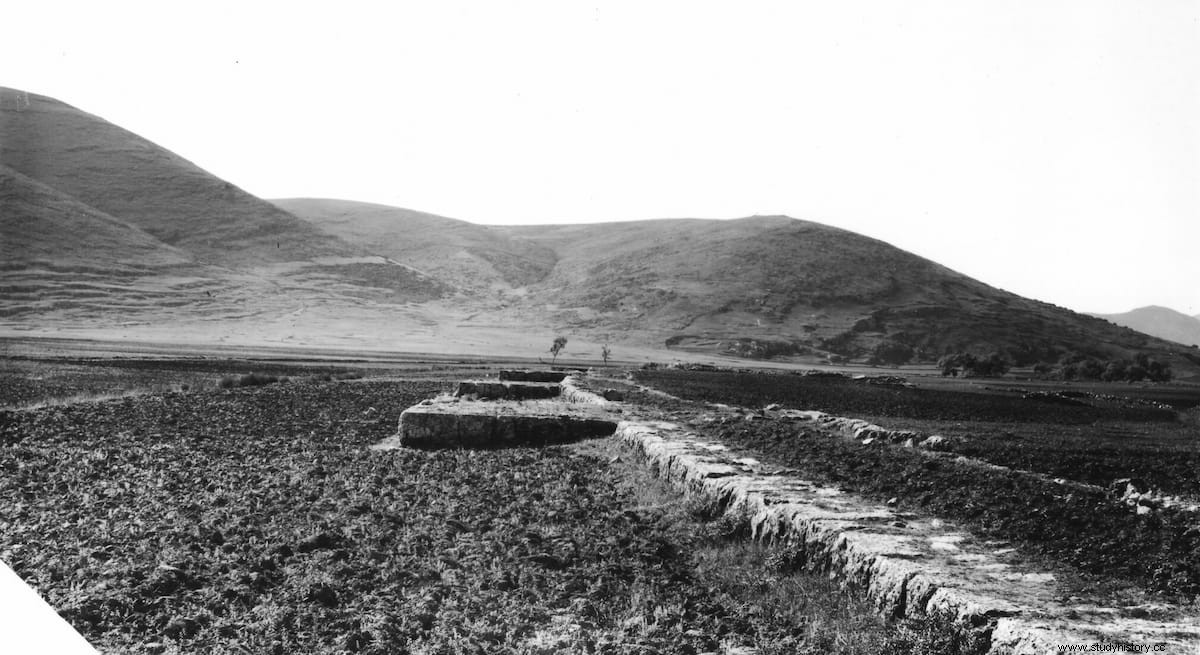Nine years after the Battle of Leuctra, in which the Theban Epaminondas crushed the Spartans using a new strategy, the staggered formation, both armies met again. It was 362 BC. and the result was similar, although its consequences were much more serious. This time Epaminondas used a little trick to fool the Spartans, now supported by the Athenians.
A year after his victory at Leuctra, Thebes had created the Arcadian League grouping together several of the city-states of the Peloponnese, precisely those that had previously suffered for so many years under Spartan rule. In addition, as the capital of the League he founded a new city, Megalopolis, strongly fortified and positioned to serve as a stronghold against Sparta , which the Arcadians rushed to build.
Not only that, together with his new allies Epaminondas made incursions into Lacedaemonian territory in the following years, looting Laconia and freeing Messenia from the Spartan yoke. But by 362 B.C. the cities of the Arcadian League discussed, before the growing power of Thebes, whether to continue as allies or not. Mantinea sided with Sparta and Athens when the Arcadians seized the sanctuary of Zeus at Olympia, while Tegea and Megalopolis remained faithful to Thebes.

Sparta, Athens and Mantinea were joined by the city of Elis (Elis), in whose territory Olympia was. To quell the rebellion Epaminondas went with his army to Mantinea, where the Athenians had already sent a contingent by sea to be intercepted by land. But instead of taking the shortest path, Epaminondas decided to follow the mountain range, west of the city of Tegea, as if he were in no rush to engage in combat. Xenophon tells it in his Hellenics :

When the Theban army finally reached about thirty stades from Mantinea, it calmly and leisurely descended from the mountains to the plain where the Spartans and their allies awaited them. There, on the road that led to Palantio and next to a place called Pélago, Epaminondas gave his troops the order to lay down their weapons and start setting up camp. Or so it seemed to the Spartans, who watched them from their own camp.
Seeing the Thebans lay down their weapons and no longer expecting to fight that day, the Spartans and their allies broke ranks and relaxed. They were already beginning to withdraw from the field when Epaminondas ordered his men to quickly pick up their weapons, form a column and head against the enemy, with himself at the head. Xenophon recounts the bewilderment that overtook the Spartans as they desperately tried to re-form into the battle line.

Epaminondas employed in battle a modified version of the novel tactics he had used at Leuctra, including the staggered formation. The Spartan cavalry was swept away by the Theban cavalry, reinforced with peltasts and hammipoi, and then the elite Boeotian troops smashed the Spartan front to flight. The only ones who withstood the onslaught were the Athenian cavalry troops, but it was not enough.
When everything seemed decided, Epaminondas was mortally wounded while he was facing the Spartan phalanx. His last words were orders for the fighting to cease and peace to be signed, which seemed more convenient to the Spartans than admitting defeat, and they did. 
Thebes thus displaced at a stroke and definitively both Sparta and Athens, which would never recover from the blow, from the Hellenic leadership. However, it was for a short time. Numerous sons of nobles were sent to Thebes as hostages and guarantors of the new peace. Among them was a young Philip, son of the Macedonian king, who showed great interest in the new military tactics of the late Epaminondas during his captivity.
In the end, with Sparta and Athens out of the picture, Thebes was so weakened after the war that the vast majority of historians agree that the final consequence of the battle of Mantinea was none other than paving the way for the subsequent conquest of Greece. by Alexander the Great.
Xenophon's conclusion was that
